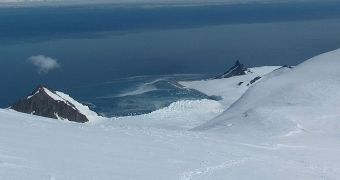The US National Research Council (NRC) Committee on Future Science Opportunities in Antarctica and the Southern Ocean has just released its list of priorities for how to better use the continent and its surrounding areas to benefit science and humanity.
Some of the points on the list call for the development of specialized observatories, to be constructed on the vast ice sheets covering Antarctica. Together, these stations could supply an endless stream of data, many gigabytes of information relayed to a command center every week.
This large-scale, interdisciplinary observing network could also be used to support the development of advanced Earth model systems, capable of simulating the entire array of weather and climate phenomena occurring at and around the South pole.
At the same time, the effort could be augmented from orbit as well. New generations of climate sensors on dedicated satellites could be used to analyze the landscape in minute detail. Specialized instruments could be used to survey the ground below the thick Antarctic ice sheets, too.
“We think the most important thing is climate change, and what’s going to happen to Antarctica,” explains the leader of the NRC Committe, Dr. Warren Zapol, as quoted by The Antarctic Sun.
The new survey was ordered by the US National Science Foundation (NSF), the White House Office of Science Technology Policy (OSTP) and the Office of Management and Budget (OMB), in order for authorities to get a clear view of the challenges and opportunities the US has in the area.
“I think it is fair to say that the committee conducted a very thorough study of scientific trends in Antarctic research. [It] was very thoughtful in posing some of the key questions about the nature of the research that will drive Antarctic science in the coming decades,” Scott Borg says.
The expert holds an appointment as the director of the NSF Office of Polar Programs Antarctic Sciences Division. He explains that the new directives cover both broad and narrow research objectives, focusing primarily on the role of Antarctica in the global climate.
Studies conducted thus far in Antarctica have revealed far-reaching, fast-moving changes occurring in the West Antarctic Ice Sheet. Global warming is more likely to affect this region first, given the fact that a lot of it floats on water, and that the Southern Ocean is heating up.
Analyzing what goes on in the eastern parts of the continent is a bit more difficult, but the latest studies indicate that the area is warming up as well. With the aid of the new NRC goals, it may become possible for experts to set up a long-term plan to observe the changes as they happen.

 14 DAY TRIAL //
14 DAY TRIAL //